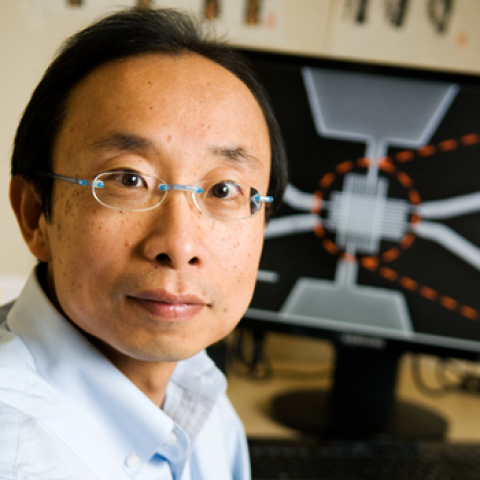Interdisciplinary Initiatives Program Round 7 - 2014
H.-S. Philip Wong, Electrical Engineering
Ada Poon, Electrical Engineering
Demir Akin, Radiology
Michael McConnell, Medicine - Cardiovascular
Continuous monitoring of intracellular environment and related biological functions in intact live cells is a revolutionary approach to advance our knowledge of biology and medicine, and enable new developments in medical diagnostics and therapeutics. Current technologies provide little information on chemical, electrical and mechanical changes inside living cells. This information is of great interest to the biomedical community in understanding complex diseases, such as cancer, immune-pathological and cardiovascular disorders. Previous works are mostly focused on nanoparticles as optical sensing agents for cells. Here we propose a novel technique to track living cells wirelessly through miniaturized RFID (radio-frequency identification) cell-tags consisting of capacitive and inductive components. We also plan to integrate a pH sensor with the cell-tag to report real-time cellular pH levels through resonance frequency shifts. RF range implantable devices for monitoring and drug delivery have been demonstrated at the organ level previously. Progress in nanofabrication and wireless communication has opened up the potential of delivering miniaturized circuit components into living cells. We capitalize on these recent advances to take the wireless sensing approach one step further and down to the cell level. The proposed proof-of-concept work can be a stepping stone toward continuous wireless in-vivo sensing of a wide range of cellular biological processes. Through continued exploitation of IC fabrication technology, we can keep reducing sensor sizes, and monitor additional biomarkers inside non-phagocytic cells for medical and biological purposes. For instance, tracking O2, NO, and Ca2+ inside cancer cells and cardiomyocytes can reveal key insights for better clinical management of these disease groups. In the long run, more types of active sensors (with active circuitry) can be integrated with the RFID cell-tags to sense other cellular quantities vital for the understanding of disease development at the single cell level and the development of better strategies for medical diagnostics and treatments.



